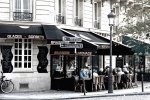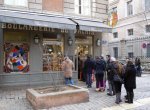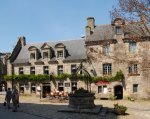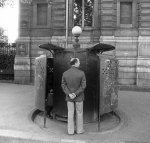aisne (02)
region: HAUTS-DE-FRANCE [picardie]
The voluptuous landscape of Aisne is lush with cereals and the bocage of dairy cattle, rolling green hills and fields of gold that ripple away to the horizon. Among the folds, tiny communities, mostly of less than 100 souls, gather around a series of Middle Age fortified churches, built as a quick and temporary defence against the passage of plundering neighbours.
They are spread out along the course of the Thon and the Oise, but are most concentrated in the valley of the Brune, south-east of Vervins, and offer a delightful excuse to wander quiet country lanes by car or on foot. Perhaps the finest, complete with a tower that can be climbed by visitors, is at Burelles, where good chance also provides the cuisine and excellent cellar of the Auberge de la Brune. But there are more churches, equally impressive, at Prisces (not open), Gronard, Plomion, Parfondeval and Chaourse.
The main town of Aisne is Laon, it stands perched clearly on a huge hill more than 100 metres above the surrounding plain, today the departmental capital, but with a pedigree that dates back to its time as the capital of the Carolingian Empire (9th-10th century), when it was known as Laudunum.
Laon cathedral © ATOUT FRANCE/CRT Picardie/Claude Jacquot
The road running west from Crupilly is so narrow it features on maps only as a single line. It runs through lovely farmland for a while before heading for Malzy and Monceau-sur-Oise, both villages with attractive fortified churches. Further on, Guise is the birthplace of Camille Desmoulins (1760-94), a man whose job I would have loved (well, except for the last ten minutes). He was the most renowned journalist at the time of the French Revolution, publicly denouncing the injustices and violence committed in its name. For his freedom of speech, he found himself facing an appointment with the guillotine as a traitor. (Up to that moment, I was with him all the way!) Guise, in spite of its modern appearance has managed to preserve an old quarter, near the church, and, without especial distinction, is nevertheless a peaceful place to take a coffee.
© ATOUT FRANCE/R-Cast
AISNE: THE CHAMPAGNE ROUTE
What doesn't immediately sink in, as you patrol the country lanes of Aisne, is the proximity to the great champagne growing districts of Marne and Aube. But south of the provincial town of Chateau-Thierry – just 35 miles south-west of the champagne capital of Reims – rows of Pinot Meunier, Pinot Noir and Chardonnay flank the sides of the Marne, the Surmelin and the Dhuys, and provide a robust economy in champagne production.
A ‘Champagne Route’,
starting from Chateau-Thierry, takes visitors through the chalky hillsides on
the very edge of Aisne, where hand picking is just one of thirty-five rules
that guarantee the quality of the wine produced here. This is ‘Fontaine’
country: Jean de la Fontaine, the 17th-century French Aesop, whose fables are
known by many French children even today, was born in Chateau-Thierry in 1621.
Along the way, as well as plentiful opportunities to sample the champagne, the
route visits a seemingly endless itinerary of small villages, each with its own
history, its own story to tell, its own fiercely defended parochialism. Condé-en-Brie, one
such sleepy village with a 15th-century market hall, was an intended lunch
halt, but one that fell foul of the splendours of its chateau, successively
owned by the princes of Condé, a place where Cardinal Richelieu stayed,
and fine 17th- and 18th-century paintings by Watteau, Lancret and Oudry, grace
the walls. The medieval market hall still has a farmers’ market every first
Sunday of the month from April until October.
In this neck of champagne country, I take time out to visit Les Jardins de Viels-Maisons, set in a 17th-century park close by the lovely Romanesque village church. Mme Bertrande de Ladoucette (a baroness, I’m told), tends the gardens assiduously, they are, after all, her family gardens, fashioned around the chateau in which she lives. As if to reinforce the point, each of her twenty-two grandchildren has a tree named after them, planted in ‘The Grandchildren’s Wood’. Close by the church is a jardin de curé, a Parish Priest’s Garden, which contains the seven elements required for the priest to fulfil his pastoral functions: flowers for the church, fruit and vegetables for the priest’s table, medicinal plants, box (the symbol of eternity), vines for the wine used at Mass, water for the garden, and a statue of the Virgin Mary, for the priest’s prayers. Elsewhere, a lovely English Garden and symmetrical plots edged with thyme, flow with colour throughout the year, and beside the greenhouse, an analemmatic sundial, built by Yves Guyot in 1997, requires your own shadow to tell the time; it is remarkably accurate.
TOURIST INFORMATION
Comité Départemental du Tourisme de l'Aisne
1 rue Saint-Martin, 02005 LAON
Tel: 03 23 27 76 76
www.jaimelaisne.com
Recent Articles
-
French Food and Drink - No BS Guide for lovers of Food, Wine, Liqueurs
Aug 28, 19 03:18 AM
Our guide to French food and drink for those who love traditional French food along with our no BS guide to understanding French wine and liqueurs
-
Things To Do In Carcassonne The Ultimate Tourist Guide
Aug 24, 19 06:26 PM
The ultimate tourist guide to things to do in Carcassonne when you visit this wonderful town in Aude France. Discover the places to go and see in Carcassone.
-
Lyon Old Town Guide to Vieux Lyon
Aug 18, 19 07:48 AM
Your complete guide to Lyon old town otherwise known as the Vieux Lyon. Don't miss this amazing part of the city if you're visiting Lyon in France.
-
18 French Villages You Must Visit Most Beautiful Villages in France
Aug 17, 19 06:31 AM
Our guide to the 18 most beautiful French villages you simply must visit. Loads of info, photos and facts in our ultimate villages in France tourist guide
-
What a Pissoir - The True Story of France's Unique Urinals
Aug 13, 19 03:47 PM
Is there anything more French than a pissoir? Sadly on the decline nevertheless the pissor is an endring image of the country. This is their story





